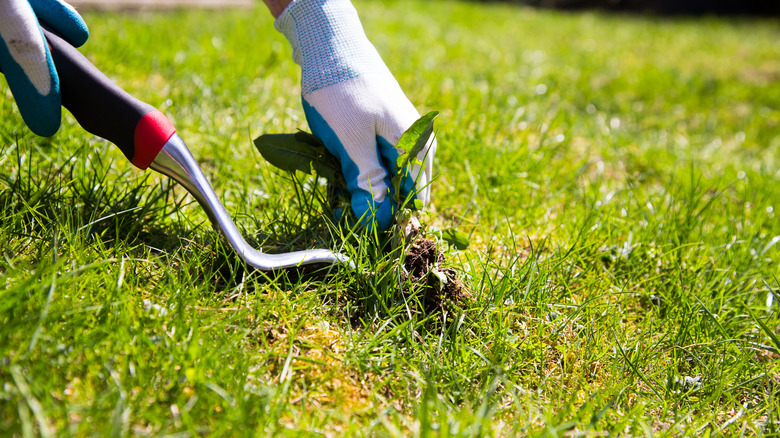We may receive a commission on purchases made from links.
Ah, quickweed! This lawn intruder, known in certain circles as the gallant soldier or hairy galinsoga, is no stranger to the art of survival. It’s as ubiquitous as it is adaptable, making itself at home in a variety of habitats. And with tiny yellow and white florets tipping their erect green stems, they attract pollinators like hoverflies and bees. But don’t let that mask quickweed’s villainous intentions against your lawn care efforts.
Quickweed can be a veritable menace when it invades your lawn. With astonishing speed in seedling development, it rallies multiple generations during a growing season, signaling intense invasion. You certainly don’t want to witness it conquer the very last blade of your grass. So, how do you get rid of it? Physical disruption and chemical warfare are your best bets. The conventional physical control method is weeding, best employed during the invader’s early growth stage. Meanwhile, the chemical defense comes in a pre-emergent form like indaziflam or post-emergent warriors like glyphosate. Your choice of weapon in this game of wits and persistence against quickweed will depend on various factors, but timing is critical.
How to get rid of quickweed without chemicals

Physical containment of quickweed starts with a trick as old as gardening: hand-pulling. Focus on uprooting the young seedlings, applying gentle, steady force to ensure you capture the whole plant and its roots. It’s especially more straightforward when the soil is moist after rainfall. Otherwise, water in advance, but beware of transforming your lawn into a muddy quagmire.
Switching gears, embrace your inner horticultural ninja by brandishing weeding tools like a hori-hori knife or a step-and-twist weeder like the Garden Weasel 95204 WeedPopper on Amazon. Designed to overthrow even the most determined weeds, these formidable instruments guarantee efficient quickweed removal and preserve your lawn’s integrity. Remember, cleanliness is part of the strategy. Thoroughly wash your tools after every skirmish, preferably using pressure washing. Otherwise, fragments of quickweed could silently creep back into your garden, lying in wait for another round of invasion.
Consistency is your mantra for physical weed control in your lawn: hunting down and removing quickweed sprouts to stifle their spread. Whether you prefer hand-to-weed combat or use weeding tools, leave no trace of your opponents. Gather and dispose of them in sealed plastic bags, lest they re-root and spark fresh outbreaks in your lawn. And one last tip: don’t nourish the very foe you wish to conquer. Moderate your lawn’s phosphorous levels, as this nutrient stimulates the growth and reproduction of these unwelcome green intruders.
Best herbicides for quickweed control in lawns

Chemical options for killing quickweed on a lawn come in two forms: pre-emergent and post-emergent herbicides. Pre-emergent herbicides play a defensive yet aggressive role in this botanical warfare, forming an invisible chemical barricade in the soil that curtails the germination of quickweed seeds. You could use a product fortified with indaziflam like Syngenta Specticle G Pre-emergent Herbicide, available on Amazon, or a flumioxazin-based alternative like SureGuard SC Pint at Walmart. Like casting a dawn ambush, pre-emergent herbicides for quickweed are best unleashed in early spring, barring any sprouting insurgency from taking root in your lawn.
Now, onto the potent formulas that are post-emergent herbicides. These swoop in like superheroes when quickweed is in the growth stage but hasn’t attained the maturity to flower. Recommended options include the excellent duo of 2,4-D and glyphosate. Here’s the catch, though: glyphosate, like a zealous warrior, is non-selective, meaning it’ll take everything down, grass included. Conversely, 2,4-D, the more discerning of the two, is grass-friendly — Hi-Yield 2,4-D Broadleaf Weed Killer on Earthtones Greenery is a worthy contender here.
Whether your plan employs pre-emergent or post-emergent herbicides, safety is paramount. So, wear appropriate protection. You also want to apply herbicide on calm days to prevent drift, which could damage desired plants. In addition, be prepared to strike more than once, especially when dealing with more established green adversaries, but only as per the manufacturer’s guidelines.



